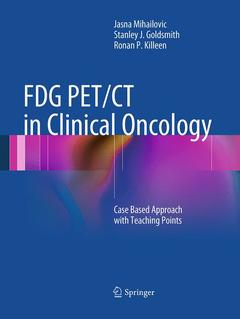Description
FDG PET/CT in Clinical Oncology, 2012
Case Based Approach with Teaching Points
Authors: Mihailovic Jasna, Goldsmith Stanley J., Killeen Ronan P.
Language: English
Subjects for FDG PET/CT in Clinical Oncology:
Keywords
Approximative price 105.49 €
In Print (Delivery period: 15 days).
Add to cartPublication date: 08-2016
Support: Print on demand
105.49 €
In Print (Delivery period: 15 days).
Add to cartPublication date: 10-2012
453 p. · 21x27.9 cm · Paperback
Description
/li>Contents
/li>Comment
/li>
FDG PET/CT has rapidly emerged as an invaluable combined imaging modality that provides both anatomic and functional information. This book, comprising a collection of images from oncology cases, is organized according to the role of FDG PET/CT in the evaluation and management of oncology patients, and only secondarily by organ or tumor entity. In this way, it reflects the issues that clinicians actually address, namely: identification of an unknown or unsuspected primary; determination of the extent of disease; evaluation of response to therapy; and surveillance after response, i.e., detection of recurrent disease. In total, 100 cases involving different primary tumors are presented to illustrate findings in these different circumstances. FDG PET/CT in Clinical Oncology will be of great value to all newcomers to this field, whether medical students, radiology, nuclear medicine, or oncology fellows, or practicing physicians.
PART ONE – DIAGNOSIS: Solitary pulmonary nodule/chest mass.- Unknown primary.- Unsuspected malignancy/second primary.- PART TWO – EXTENT OF DISEASE: Head & Neck.- Lung.- Breast.- Esophageal.- Colorectal.- Lymphoma.- Multiple Myeloma.- Gynecology.- Miscellaneous.- PART THREE – FOLLOW UP: Lung Ca.- Breast Ca.- Pancreas Ca.- Colorectal Ca.- Lymphoma.- Multiple Myeloma.- Thyroid Gland.- Urologic.- Miscellaneous.- PART FOUR - EVALUATION OF RESPONSE: Lymphoma.- Multiple Mueloma.- Lung.- Gastrointestinal Tumors.- Breast.- Neuroendocrine Tumor.




